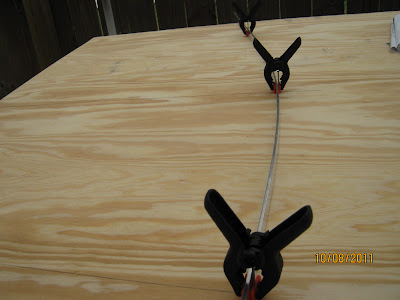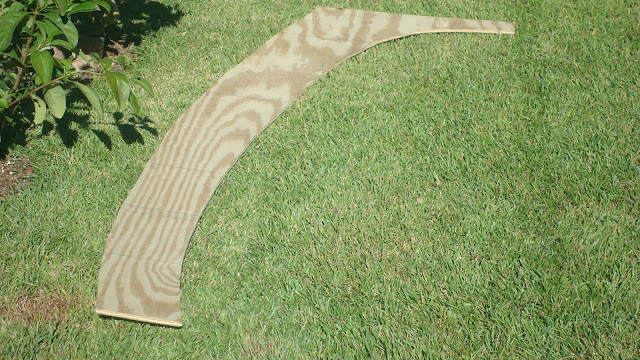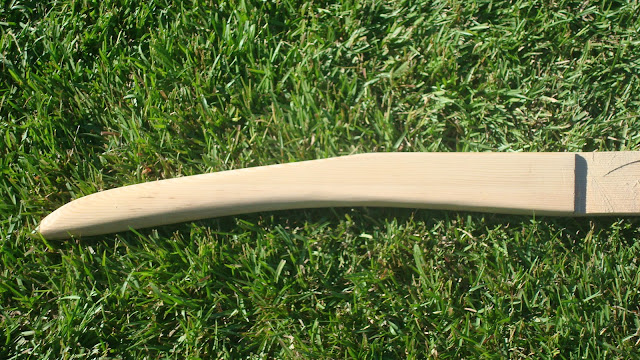 | |||||
| Dead Wood |
They call this piece "dead wood". I thought all the wood I'm using is dead wood because wouldn't "live wood" be called a tree? Anyway, I also cut a little notch for the front of the hull bottom to slide up into.
Then I made a stringer for the top of the transom. Because the top of the transom has quite a horizontal and vertical curve to it I kerfed the stringer on two sides. Kerfs are little cuts made halfway through the wood to allow it to bend.
 | ||
| Kerfed Stinger |
I had noticed that the keel would developed a little bit of a bow to it when the humidity level got high. To help with this I sandwiched it between a couple of 2X8's and clamped everything together tightly to help keep the keel straight until I was ready to attach the hull bottom to it.
 |
| Clamped Keel |
Next I started all of the screws that will be driven through the hull bottom into the top of the keel. I want to make sure that the keel doesn't move once the two pieces are attached so I doubled up on the number of screws. I alternated them so that one screw goes into one side of the laminated keel and next screw goes into the other side.
 | ||||
| Hull Bottom Screws |
Ok, this is a big moment. I glued and screwed the hull bottom to the top of the keel. I went 3D baby!!!
 |
| 3D!! |
You can see that I made a stand that I attached to the tops of a couple of saw horses to hold the keel up high so I could make sure that everything was going together straight. If it had been on the ground I would have gotten dirt in my ear.
While I had the epoxy out I glued together the five pieces of the deck. I flipped it over after I had everything glued up so that it wouldn't stick to the plastic I had under it. You can see the stringers and the panel joiners. Hopefully, this will be the only time the deck will be upside down.
 | ||
| Upside Down Deck |
Now that the boat is starting to go together, I needed to make a sled so that I can move it around easily. I used the stand I had made for the tops of the saw horses and some wheels I picked up at a garage sale. I'm so happy with it that I am thinking I'll just put a hitch on the front of it and use it as a boat trailer.
 |
| Boat Trailer |
Finally, I put the deck on by attaching it to the transom, forward bulkhead and the stem. It's really starting to look like a boat now.
 |
| Front Deck Assembly |
 |
| Rear Deck Assembly |




























